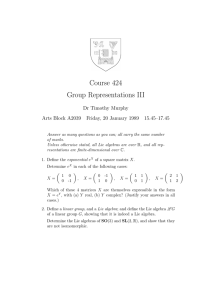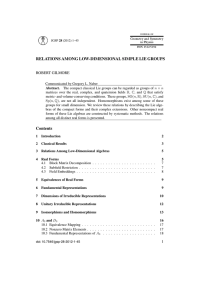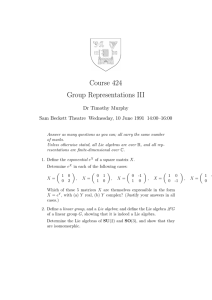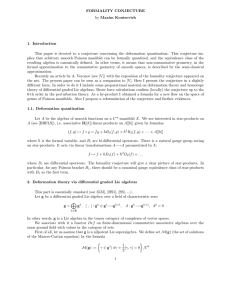ASSOCIATED LIE ALGEBRAS AND GRADED CONTRACTIONS OF THE PAULI GRADED C )
advertisement
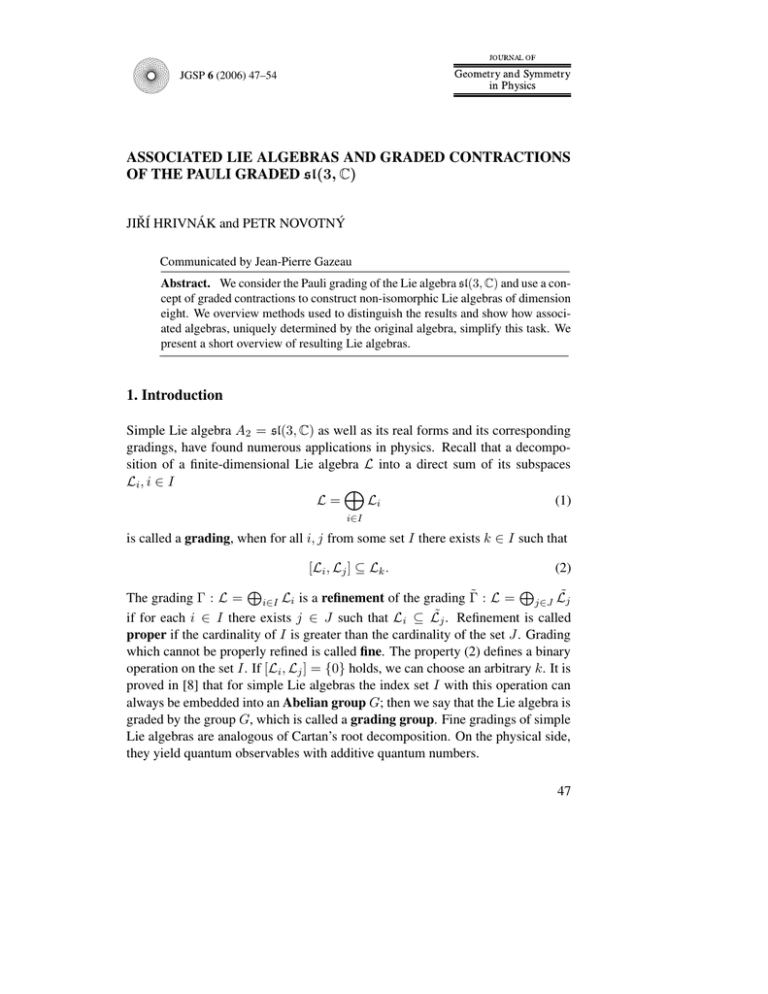
JGSP 6 (2006) 47–54
ASSOCIATED LIE ALGEBRAS AND GRADED CONTRACTIONS
OF THE PAULI GRADED sl(3, C)
JIŘÍ HRIVNÁK and PETR NOVOTNÝ
Communicated by Jean-Pierre Gazeau
Abstract. We consider the Pauli grading of the Lie algebra sl(3, C) and use a concept of graded contractions to construct non-isomorphic Lie algebras of dimension
eight. We overview methods used to distinguish the results and show how associated algebras, uniquely determined by the original algebra, simplify this task. We
present a short overview of resulting Lie algebras.
1. Introduction
Simple Lie algebra A2 = sl(3, C) as well as its real forms and its corresponding
gradings, have found numerous applications in physics. Recall that a decomposition of a finite-dimensional Lie algebra L into a direct sum of its subspaces
Li , i ∈ I
M
L=
Li
(1)
i∈I
is called a grading, when for all i, j from some set I there exists k ∈ I such that
(2)
[Li , Lj ] ⊆ Lk .
L
L
The grading Γ : L = i∈I Li is a refinement of the grading Γ̃ : L = j∈J L̃j
if for each i ∈ I there exists j ∈ J such that Li ⊆ L̃j . Refinement is called
proper if the cardinality of I is greater than the cardinality of the set J. Grading
which cannot be properly refined is called fine. The property (2) defines a binary
operation on the set I. If [Li , Lj ] = {0} holds, we can choose an arbitrary k. It is
proved in [8] that for simple Lie algebras the index set I with this operation can
always be embedded into an Abelian group G; then we say that the Lie algebra is
graded by the group G, which is called a grading group. Fine gradings of simple
Lie algebras are analogous of Cartan’s root decomposition. On the physical side,
they yield quantum observables with additive quantum numbers.
47

